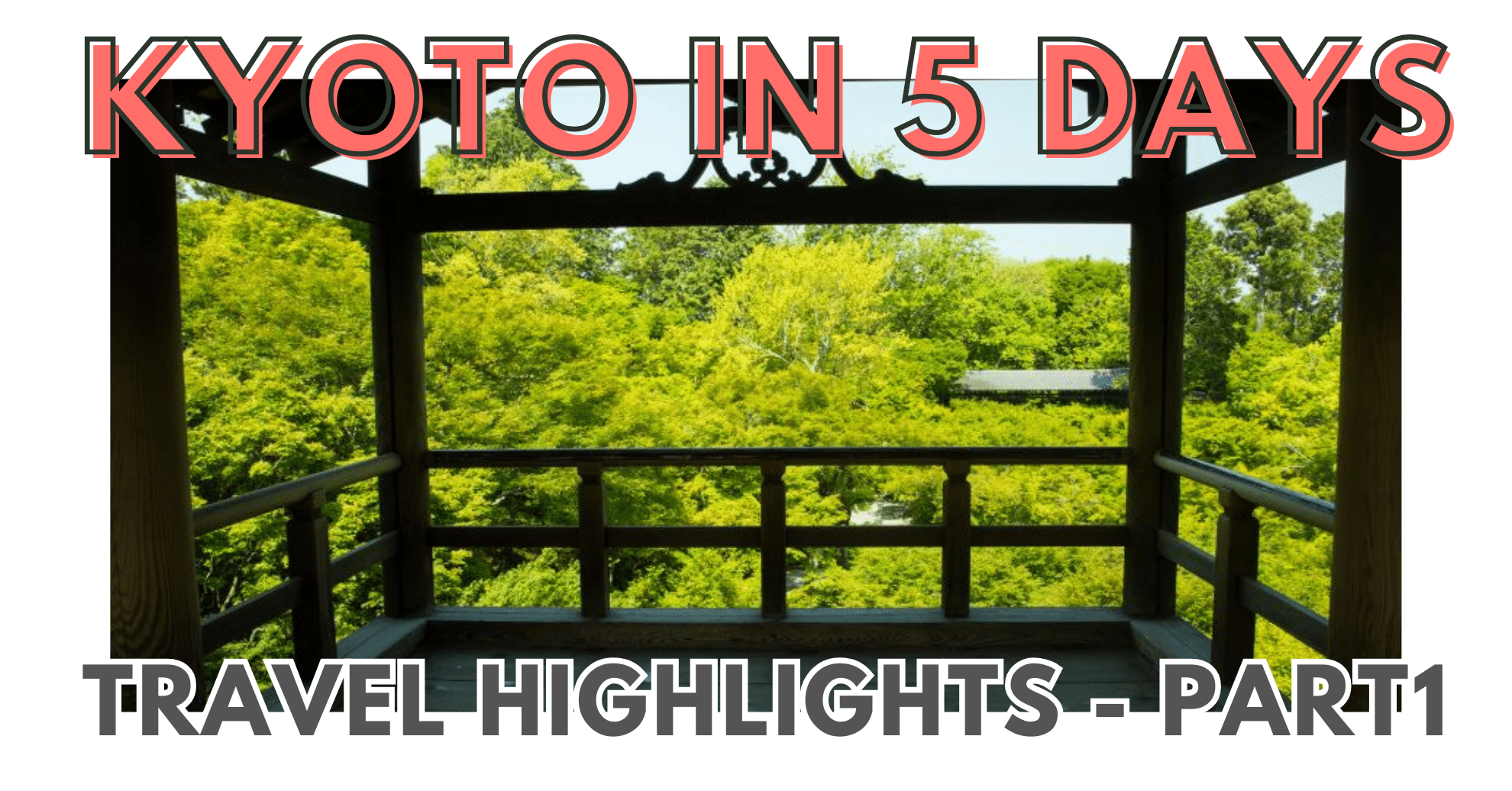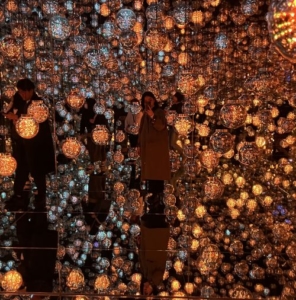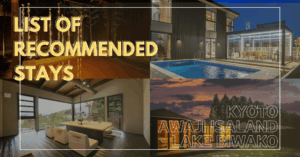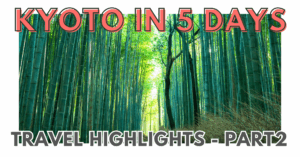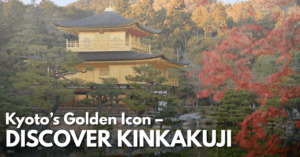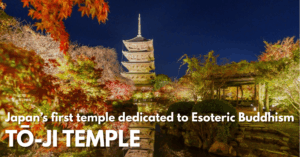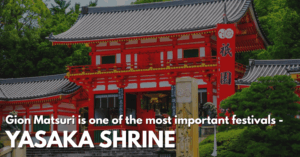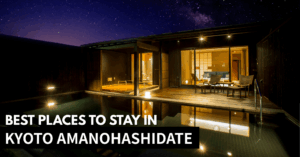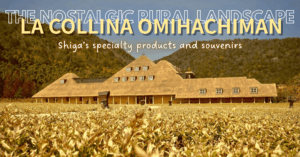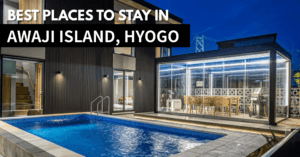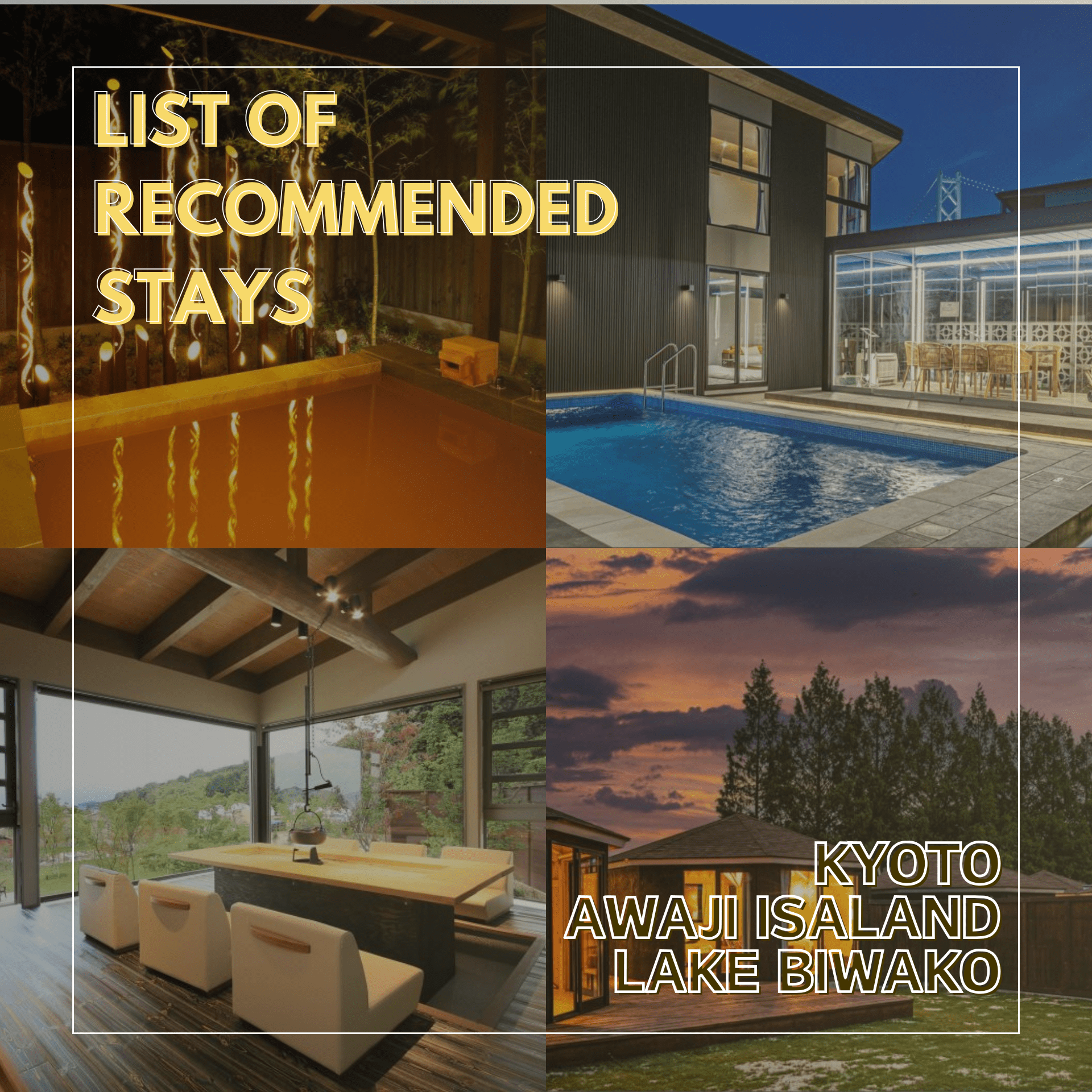Kyoto is much more than just temples and shrines—it’s a city where ancient tradition and modern culture harmoniously coexist. From historical landmarks and spiritual sites to gourmet dining, shopping streets, and hands-on experiences, there’s something here for every traveler.
In this guide, we’ll introduce Kyoto’s classic sightseeing highlights through a 5-day, 4-night model itinerary. Alongside the “Insta-worthy” photo spots and trending attractions, we’ve included significant cultural landmarks deeply tied to Japan’s history.
Feel free to rearrange the schedule according to your interests or the number of days you’re staying—each day’s course can be customized.
If you’re completely new to Kyoto, we recommend starting with the first section: “What Kind of City is Kyoto? A Guide to Its 5 Distinct Areas.”
Also, be sure to check out the second part of the guide, where we introduce five conveniently located accommodations that offer a taste of Kyoto’s cultural charm.
Contents
What Kind of City is Kyoto? A Guide to Its 5 Distinct Areas Kyoto can be broadly divided into five key areas: Rakuchū, Rakusai, Rakunan, Rakutō, and Rakuhoku. Each has its own unique characteristics and atmosphere.
Let’s take a closer look at what makes each area special:
Rakuchu (Central Kyoto): The Heart of Traditional Kyoto In Kyoto’s traditional naming conventions, the character “洛” (raku) means “capital,” referencing the city’s historical status as Japan’s imperial capital.
The central area of Rakuchu includes Kyoto Station, Nishiki Market, and other bustling hubs for shopping and food. You’ll also find a mix of historical and modern attractions, such as Higashi Hongan-ji Temple, Kyoto Aquarium, and Kyoto Railway Museum, making it great for all ages.
This is the perfect area for travelers with limited time, as it offers a quick yet rich experience of Kyoto’s essence.
Rakusai (Western Kyoto): A Paradise for History, Nature, and Scenic Train Lovers Rakusai is home to many UNESCO World Heritage Sites like Kinkaku-ji (Golden Pavilion) and Tenryū-ji Temple, as well as natural beauty spots such as Arashiyama, the Bamboo Grove, the Sagano Scenic Railway, and Hozugawa River cruises.
This area is a must for travelers who love majestic temples, picturesque landscapes, and nostalgic train journeys.
Rakunan (Southern Kyoto): Instagram-Worthy Views, History, and Matcha Sweets Highlights of Rakunan include Fushimi Inari Taisha, famous for its thousands of vermilion torii gates, and Byōdō-in Temple, featured on the Japanese 10 yen coin.
As this area borders Uji City, it’s also known for delicious matcha sweets. History buffs will appreciate sites linked to The Tale of Genji and the Bakumatsu era, such as Teradaya and Ryoma Street.
Rakuto (Eastern Kyoto): Elegant Streets and Timeless Beauty Rakuto is home to iconic landmarks like Kiyomizu-dera Temple, Ginkaku-ji (Silver Pavilion), and Yasaka Shrine, known for the Gion Festival.
You’ll also find charming streets like Ninen-zaka and Sannen-zaka, the scenic Hanamikoji Street near Yasaka Shrine, and the historic Gion district with its well-preserved machiya townhouses.
The Kamo River runs through this area and is loved by locals as a peaceful place to relax. In summer, the riverside Noryo-yuka platforms offer a uniquely Kyoto dining experience.
This is the area for you if you want to stroll through historic neighborhoods and see the essence of classic Kyoto.
Rakuhoku (Northern Kyoto): A Mystical Retreat Surrounded by Nature Nestled in the forested northern mountains are Kurama-dera Temple and Kifune Shrine, both known for their spiritual ambiance.
In summer, visitors flock to Kawadoko dining—open-air riverside decks suspended over the Kifune River, where you can enjoy traditional meals in the cool mountain air.
This area is perfect for those who want to explore Kyoto at a slower pace or are visiting in the summer months.
Day 1: Explore Kyoto’s Historic Landmarks from the Age of Civil Wars From here, we begin our 5-day Kyoto itinerary, filled with must-see spots across the city.
This day includes not only historic landmarks, but also places where you can enjoy Kyoto cuisine, shop for souvenirs, or try a kimono rental experience.
Let’s start Day 1!
9:00 – Depart from Kyoto Station (Central Exit) Your first stop is just a 5-minute walk from the Central Exit of Kyoto Station: Higashi Hongan-ji Temple.
9:30 – Higashi Honganji: One of the World’s Largest Wooden Structures Higashi Honganji is a temple of the Jōdo Shinshū (True Pure Land) sect of Buddhism, which teaches that salvation can be attained by chanting “Namu Amida Butsu.”
Highlights include:
The massive wooden gate The Founder’s Hall Gate(Goei-dō Mon),one of the largest in the world The Founder’s Hall(Goei-dō),which enshrines a statue of founder Shinran The impressive calligraphy plaque reading “Ōtani Sobyō” Once part of a single temple, the original Hongan-ji was split into East (Higashi) and West (Nishi) branches due to political conflicts. Today, Higashi Honganji offers a sacred atmosphere and a powerful sense of historical depth.
Estimated visit time: 1–2 hours
Read More Highlights of Higashi Honganji Temple and Nearby Attractions Higashi Honganji Temple is one of Kyoto’s most prominent Buddhist temples. Located just a 5-minute walk from Kyoto Station, it’s a popular destination for bo… 11:00 – Lunch at Koryouri Takaya Source:https://r.gnavi.co.jp/gs5cn9yd0000/lunch/ This area near Kyoto Station has many dining options, but they tend to get crowded—so it’s best to have an early lunch.
Located along the walking route to your next destination (Nishi Hongan-ji), Koryouri Takaya serves traditional Kyoto cuisine in an intimate, refined setting.
Kyoto-style cuisine emphasizes seasonality, elegance, and the natural flavor of ingredients, with a strong focus on dashi-based preparation.
The restaurant’s lunch set—”Eight Delicacies and Perfectly Cooked Rice”—is a delightful showcase of Kyoto’s culinary finesse.
Enjoy multiple small dishes alongside all-you-can-eat freshly steamed rice, served over a beautiful counter.
12:00 – Nishi Hongwanji: A World Heritage Site of Ornate Splendor Just a 10-minute walk from Higashi Hongan-ji lies its counterpart, Nishi Hongwanji.
This temple’s highlights include the Goeido(Founder’s Hall), which enshrines a statue of Shinran Shonin, and the magnificent Karamon Gate.
The Goeido is richly adorned with gold leaf, carved transoms, and wall paintings—offering a glimpse into a paradise-like Pure Land.
The Karamon Gate features bold black lacquer, intricate carvings of peonies and mythical karajishi lions, and is considered an icon of Momoyama art.
It’s so captivating that people say you might lose track of time admiring it—hence its nickname, “All day gate.”
Estimated visit time: 1–2 hours
Read More Highlights of Nishi Hongwanji and Nearby Attractions Nishi Hongwanji, one of Kyoto’s most prominent temples, is located just a 10-minute drive or bus ride from Kyoto Station, making it easily accessible for tou… 14:30 – Nijo-jo Castle: A UNESCO World Heritage Site Steeped in History From Nishi Hongan-ji, it takes about 10 minutes by bus to reach Nijo-jo Castle, built in 1603 by Tokugawa Ieyasu, the first shogun of the Edo period.
The 2024 Disney+ drama Shōgun is inspired by Ieyasu—so if you’re a fan, you might enjoy imagining what kind of man he was as you walk the grounds.
In 1867, centuries after its construction, Nijo-jo Castle became the site of the return of power to the Emperor—marking the end of the Tokugawa Shogunate.
The main attraction is Ninomaru-goten Palace, where the grandeur of the Tokugawa era is on full display. Inside, you’ll find stunning wall paintings by the Kano school that reflect the full authority of the shogunate.
Estimated visit time: 60–90 minutes
Read More Highlights of Nijo Castle and Nearby Attractions Among Kyoto’s many temples and shrines, Nijo Castle stands out as a historical witness to some of Japan’s most dramatic political changes. Located in Kyoto’s… 16:00 – Kitano Tenmangu: The Deity of Learning and Arts A 15-minute bus ride from Nijo-jo Castle brings you to Kitano Tenmangu, the head shrine of more than 12,000 Tenmangu shrines across Japan.
It’s dedicated to Sugawara no Michizane, the deity of scholarship and culture. Be sure to stroke the Nadeushi (rub bull statue) on the grounds—legend says it will make you smarter!
The shrine’s highlight is its Main Hall, a designated National Treasure. The golden decorations and detailed wood carvings are both refined and lavish.
Estimated visit time: 30–60 minutes
Read More Highlights of Kitano Tenmangu Shrine and Nearby Attractions Affectionately known as “Tenjin-sama of Kitano”, Kitano Tenmangu Shrine is revered as the guardian deity of academic success, performing arts, and protection… 18:00 – Dinner at Kappo Uotake Source:https://restaurant.ikyu.com/110638 For your first dinner in Kyoto, we recommend Kappo Uotake, located near Kitano Tenmangu.
This elegant counter-style kappo (traditional Japanese fine dining) restaurant features a warm and inviting atmosphere, shaped by its friendly owner. For a quieter experience, private table rooms are also available.
The menu includes seasonal delights such as:
Softshell turtle hot pot made with umami-rich dashi Deep-fried tilefish (guji) Seared A5 wagyu beef Day 2: Market Strolling, Street Food, and Elegant Kimono Experiences On Day 2, you’ll explore Nishiki Market and the Kamogawa River area—places locals frequent in daily life. Enjoy a mix of food, shopping, and scenic walks before trying on a kimono to stroll gracefully through Kyoto’s historic streets.
09:00 – Nishiki Market: Start Your Morning at “Kitchen of Kyoto” Known as “Kitchen of Kyoto,” Nishiki Market has a history of over 400 years.
This vibrant 390-meter-long arcade is lined with around 120 shops—ranging from traditional sweets and sushi to sake, fresh seafood, and pickles.
Start your day with a few local bites:
Try the dashi-maki tamago (Japanese Omelette) at Miki Keiran , a specialty shop.
For an efficient route, enter the market from Takakura Street and walk straight toward Teramachi Street. Exit near Gion-Shijo Station to smoothly continue toward the Kamogawa area.
Source:https://www.kyoto-nishiki.or.jp/map/ Most shops open between 09:00 and 10:00, but it gets crowded quickly—so visiting early is recommended.
Estimated visit time: 30–60 minutes
10:30 – Kamogawa River: A Local Sanctuary + Kimono Rental Experience From Nishiki Market, head toward Gion-Shijo Station and you’ll soon reach the Kamogawa River, a beloved place for locals to relax.
Continue walking toward Gion, a former geisha district, and stop by Kyoto Kimono Rental Wargo – Gion Store, located at the entrance of Gion’s main shopping street.
This is one of the largest kimono rental stores in the area and is just a 7-minute walk from Yasaka Shrine. The shop offers full services: kimono fitting, hairstyling, and even kanzashi hair accessories—all available without bringing anything yourself.
Multilingual support is also available, making it foreigner-friendly.
11:30 – Gion Shopping Street & Hanamikoji: Strolling Kyoto’s Historic Streets The Gion Shopping Street is filled with souvenir shops like Yojiya (famous for oil blotting paper) and Nishio Yatsuhashi Honke (classic Kyoto sweets).
As you continue walking toward Yasaka Shrine, you’ll arrive at Hanamikoji Street, a picturesque old alleyway. If you’re lucky, you may even spot a maiko (apprentice geisha) or geiko in traditional attire.
Note on Photography
From Gion-Shijo Station to Yasaka Shrine is about a 15-minute walk. Allow 90 minutes total to accommodate dressing, shopping, and resting.
12:00 – Yasaka Shrine: Home of the Gion Festival, One of Japan’s Big Three The Gion Festival is one of Japan’s three most famous festivals and is held at Yasaka Shrine every July. During this time, the entire city comes alive with festive spirit.
Must-see features include:
The Main Hall, designated a National Treasure in 2020 The West Tower Gate (Nishiroumon), the shrine’s oldest structure The Main Hall is uniquely designed with the main sanctuary and worship hall under a single large roof—a rare architectural style. It’s also one of the largest shrine buildings in Japan. Estimated visit time: 1–2 hours
Read More Highlights of Yasaka Shrine and Nearby Attractions Located in the heart of Kyoto’s Gion district, Yasaka Shrine is one of the city’s most iconic shrines. Known affectionately as “Gion-san” by locals, it enshr… 13:30 – Lunch at Ikkyuan: Light Kyoto Cuisine in Maruyama Park Source:https://maruyama-ikkyuan.com/ Located within Maruyama Park, right next to Yasaka Shrine, Ikkyuan is a perfect spot for a relaxed lunch or a refreshing break.
Recommended menu items include:
Tofu Skin Bowl:Creamy tofu skin over glutinous rice and red bean rice Dango 3sisters (Three types of rice dumplings)—ideal for a light, sweet meal The peaceful setting in the park makes this an excellent stop between sightseeing destinations.
15:00 – Heian Jingu Shrine: A Beloved Symbol of Kyoto Pride From Yasaka Shrine, it’s about a 15-minute walk to Heian Jingu Shrine, where a towering torii gate marks the entrance.
The shrine was built in 1895 to commemorate the 1100th anniversary of Kyoto’s founding as the capital in 794.
Must-see highlights include:
The vividly colored Daigokuden (Main Hall) The massive Shin’en Garden, covering 33,000㎡ The Daigokuden is a replica of the Imperial Audience Hall and is flanked by Byakkoro and Seiryuro towers, creating a stunning palace-like setting. Estimated visit time: 1–2 hours
Read More Highlights of Heian Shrine and Nearby Attractions Heian Shrine was built as a symbol of hope for the revitalization of Kyoto. From 794 to 1192, the Heian period marked over 400 years during which Kyoto flour… 17:00 – Dinner at Kyo-Ryori Takeshima ICHIGO: Dine Along the Kamo River Source:https://www.takeshimakyoto.jp/ Located in Kyoto’s historic Kiyamachi district, Kyo-Ryori Takeshima ICHIGO first opened in 1897 as a riverside inn and now serves exquisite seasonal Japanese cuisine in a refined kappo-style setting.
From May to September, guests can enjoy their meal on the restaurant’s Noryo-yuka—a seasonal dining platform over the Kamo River.
The menu includes:
Ginjō Kaiseki course with seared A5 wagyu and fresh sashimi Mini Kaiseki options for lighter appetites In summer, we highly recommend the Hamo(conger eel) Shabu Kaiseki, a hotpot course featuring Kyoto’s beloved pike conger Note: There is a 10% service charge for Noryo-yuka seating, but the experience of dining over the river on a summer evening is well worth it.
What is “Noryo-yuka”?
19:00 – Ponto-cho: Stroll Through Kyoto’s Refined Nightlife District Ponto-cho is a narrow, lantern-lit alley running parallel to the Kamo River, lined with restaurants, teahouses, and intimate bars.
Here, you’ll find:
Cozy Western-style bars serving craft cocktails and whiskies Traditional Japanese snack bars with music and drinks Hidden speakeasies perfect for solo travelers or quiet conversation Many establishments stay open until 02:00 or 03:00, making Pontocho ideal for those wanting to savor Kyoto’s deeper, more atmospheric nightlife.
Day 3: Kyoto’s Most Photogenic Spots, Street Food, and Shopping On Day 3, you’ll visit some of the most popular landmarks among both domestic and international travelers—Kiyomizu-dera Temple, Toji Temple, and Fushimi Inari Taisha. Along the way, you’ll also enjoy Kyoto-style street food and souvenir shopping.
08:00 – Ichinen-zaka to Kiyomizu-zaka: Scenic Streets Leading to Kyoto’s Iconic Temple Kiyomizu-dera Temple frequently appears in famous anime like Detective Conan, and it’s one of the most iconic spots in all of Kyoto.
To avoid crowds, aim to arrive early in the morning.
The approach to the temple includes a series of charming streets: Ichinen-zaka, Ninen-zaka, Sannei-zaka, and Kiyomizu-zaka. These traditional lanes are lined with preserved wooden buildings and are great for street snacks and souvenir hunting.
One standout location is the Starbucks Kyoto Ninenzaka Yasaka Chaya , housed in a traditional machiya over 100 years old. The fusion of historic architecture and modern café culture gives it an art museum-like atmosphere.
The menu is the same as other Starbucks, so if you need a break from Kyoto cuisine, it’s a comforting stop for coffee and breakfast.
08:30 – Kiyomizu-dera Temple: World Heritage Site and Unmatched City Views Officially named Mt.Otowa Kiyomizu-dera Temple, this temple was founded more than 1,000 years ago on the forested slopes of Mt.Otowa. It’s one of Kyoto’s most famous temples.
The temple’s main stage, which juts out from the hillside, is the origin of the saying “to jump off the stage of Kiyomizu”. The view from the platform, overlooking the city and the gorge, is breathtaking.
Other highlights include:
The Nio-mon, featuring Kyoto’s largest guardian statues The Three-Story Pagoda, one of Japan’s largest The spiritual Zuigu-do Hall Estimated visit time: 1–2 hours
Read More 非公開: 【京都清水寺】見どころや清水の舞台の秘密を紹介!イベントやアクセス・周辺の観光スポットも 京都の有名なお寺「清水寺」。 近くの清水坂や二寧坂・産寧坂も有数のお土産・グルメスポットでもあることから、多くの方が訪れています。 この記事では、清水寺の見ど… 11:00 – Tofukuji Temple: Kyoto’s Largest Temple Complex Tofukuji Temple is known for its massive layout and historical significance.
Highlights include:
Sanmon Gate, a National Treasure Hondo Hall, featuring a ceiling painting of a blue dragon The famous Tsuten-kyo Bridge, leading to the founder’s hall The area surrounding the bridge is filled with maple trees, making it a prime location for autumn foliage. In spring and summer, the vibrant green leaves offer a serene atmosphere.
The Honbo Garden is also worth a visit, blending Zen rock garden elements with a modern checkered layout—a fresh take on traditional design.
Estimated visit time: 1–2 hours
Read More 非公開: 【京都東福寺】見どころや紅葉・特別行事・アクセス方法を紹介!周辺の観光スポット・カフェも 京都市のやや南部に位置する「東福寺」。 臨済宗の代表的なお寺であり、京都最大の大伽藍※を誇る格式の高さで知られています。 建築開始から幾度となく火災に見舞われ、… 13:30 – Lunch at Midori: Traditional Grilled Eel with Decades-Old Sauce Source:https://midorinounagi.gorp.jp/ About 15 minutes by bus from Tofukuji Temple, Midori is a specialty restaurant serving authentic grilled eel (unagi) dishes.
The restaurant uses a rich, house-made sauce that has been aged and refined over decades. Brushed onto perfectly grilled eel, it creates a deep, savory flavor and glossy finish.
Menu highlights include:
Unaju: Classic grilled eel over rice, served in a lacquered box Hitsumabushi: Grilled eel served three ways Unadon and eel-liver soup set: A more casual yet satisfying option In Japan, eel is considered a luxury food often reserved for special occasions—so don’t miss the chance to indulge!
14:30 – Toji Temple: Kyoto’s Landmark Five-Story Pagoda Just a 10-minute walk from Midori, the iconic five-story pagoda of Toji Temple will come into view.
Officially named Kyouou Gokokuji Temple, Toji was Japan’s first esoteric Buddhist temple and was founded over 1,200 years ago. It’s also famous for its three-dimensional mandala, a rare temple layout in Japan.
Highlights include:
The Five-Story Pagoda, Japan’s tallest wooden tower The intricately detailed South Gate (Nandaimon) The Lecture Hall (Kodo) at the temple’s spiritual core Estimated visit time: 30–60 minutes
Don’t Miss the Toji Kobo Market! Source:http://www.touji-ennichi.com/
Read More Highlights and Nearby Attractions of Tō-ji Temple in Kyoto | Seasonal Events & Access Located within walking distance from Kyoto Station’s Hachijoguchi Exit, Tō-ji Temple is a historic site built over 1,200 years ago alongside the establishmen… 15:30 – Fushimi Inari Taisha: Walk Through the Famous Thousand Torii Gates From Toji Temple, it takes about 25 minutes by bus or train to reach Fushimi Inari Taisha.
This is the head shrine of over 30,000 Inari shrines across Japan and is revered as the god of bountiful harvests, business prosperity, family safety, and wish fulfillment.
Highlights include:
The Main Shrine (Honden) with its elegant architectural details The iconic Senbon Torii, or “Thousand Torii Gates” The mystical Omokaruishi Stone Lanterns While the vermilion torii gates are the most famous photo spot, the main shrine itself is a beautiful work of art.
At the rear of the complex lies the Okusha Hohaisho, where you’ll find the Omokaru Stone. After making a wish, lift the stone. If it feels lighter than expected, your wish is said to come true.
Estimated visit time: around 1 hour
Read More Fushimi Inari Taisha: Highlights, Access, and Recommended Nearby Attractions Fushimi Inari Taisha is one of Kyoto’s most iconic photo spots, best known for its breathtaking Senbon Torii—the thousands of vermilion torii gates lining th… 16:15 – Fushimi Inari Shopping Street: Fox-Themed Snacks & Souvenirs The street leading up to Fushimi Inari Taisha is filled with shops for street food and souvenirs. Since the fox (kitsune) is considered the shrine’s divine messenger, many treats and gifts are themed around it.
Hogyokudo – Home of the Original Inari Senbei Source:https://inari-kyoto.com/hogyokudo
Their mild sweetness and crisp texture make them a popular snack and souvenir.
You can also find other charming gifts like “Suzu Senbei,” bell-shaped crackers with fortune slips tucked inside.
Chiikawa Mogumogu Honpo – Character Goods Heaven
You’ll find Kyoto-exclusive goods like plushies, tote bags, towels, and snacks—all featuring Chiikawa dressed as a fox (kitsune), in honor of the local deity.
※May require reservations during peak season.
18:00 – Dinner at Soba Teuchi Takahashi: Handcrafted Noodles in a Historic Teahouse Source:https://preview.studio.site/live/1YWjrpAYWm About 20 minutes from Fushimi Inari Taisha by train or car, Soba Teuchi Takahashi is a soba and creative washoku (Japanese cuisine) restaurant housed in a renovated former teahouse.
In 2022, it was designated by Kyoto City as an architecturally significant property in the “The buildings and gardens which make Kyoto attractive .” program.
Menu highlights include:
Authentic handmade soba Seasonal Japanese small plates A curated selection of sake to match your meal—feel free to ask for recommendations
Conclusion That wraps up the first part of our Kyoto travel guide!
In this article, we explored Kyoto’s must-see landmarks through a 3-day itinerary—perfect for first-time visitors who want a well-rounded experience of the city’s history, culture, food, and shopping.
In Part 2, we’ll dive into the western and eastern districts of Kyoto, including:
Nanzen-ji Temple and Ginkaku-ji (Silver Pavilion), where you can experience the deep-rooted Japanese aesthetic of wabi-sabi The dazzling Kinkaku-ji (Golden Pavilion) The lush natural landscapes of Sagano and Arashiyama We’ll also introduce five carefully selected inns with easy access to major attractions and a deep connection to Kyoto’s traditional charm.
Be sure to check it out as well!
Read More [Part 2] A 5-Day First-Time Kyoto Itinerary Featuring Classic Spots & 5 Handpicked Accommodat… In this article series, we’re introducing the perfect itinerary for first-time visitors to Kyoto—split into Part 1 and Part 2. This second half of the 5-day … 
